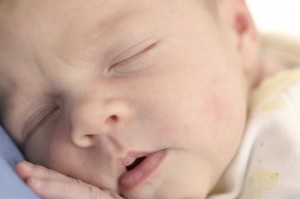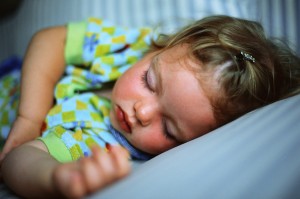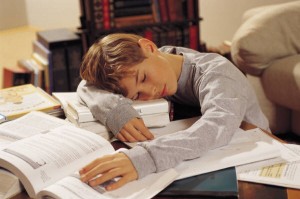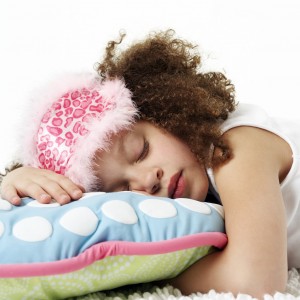
You don't appreciate how important sleep is until you become a parent. For some families sleepless nights last a few weeks until young babies settle into a regular routine and new parents learn what works for their child. For other families their child's sleep pattern is something they battle with for years. Not enough sleep or broken sleep effects both children and parents.
There are ways to improve your child's sleep patterns. For some families a few simple strategies may be enough while for others support from a trained professional may be needed. Occupational therapists can help you analyse your child's sleeping, provide strategies and develop a plan to help your child sleep better.
Sleep is important for:
- growing, fighting disease, healing and staying healthy
- recovering from the days activities and storing memories
- emotional regulation and learning
So what is sleep? Sleep is made up of two cycles called ‘non-rapid eye movement’ (NREM) and ‘rapid eye movement’ (REM) sleep.
NREM sleep is when your body grows and heals itself. In NREM sleep you move gradually from light sleep where you relax and your breathing slows and deepens to deep sleep. The deeper your sleep becomes the harder it is to wake. In REM sleep memories of the days activities are sorted, organised and stored.
During REM sleep your body, other than your eyes, is still but your brain is active with dreams. REM sleep is also important for growth and for the development of the brain and nervous system. Children increase the amount of NREM sleep as they get older and reduce the amount of REM sleep.
As we sleep we go through cycles of NREM and REM sleep. Cycles last around an hour in babies and close to two hours in adults. Between stages we may move around or wake. As babies cycles are shorter they are more likely to wake than older children and adults.
Our brains determine when we are awake and asleep. A number of parts of the brain, brainwaves and chemicals effect our sleep cycles. Our brain produces "melatonin" which starts the sleep cycle. Our brain increases the level of melatonin produced as it gets dark and reduces it as it becomes lighter in the early morning. Various factors in the environment effect our sleep cycles including brightness and types of light, social routines such as mealtimes, bath times, activities such as story times and quiet play, body signals such as temperature and hunger, and sensory stimulation such as noise levels.

Many children show disturbed sleep with estimates of between 20 to 30 percent of children of all ages, and this is common in children with special needs with estimates from 37% to 88% of children with special needs having sleep issues. In children with special needs there may be a number of factors effecting sleep patterns. Children with autism spectrum disorder often have difficulty falling asleep and staying asleep while children with Down's Syndrome may have breathing issues which affect their sleep.
Causes of sleep disturbance include physical, sensory, emotional and behavioural issues.
Some common causes include:
- difficulty establishing routines
- waking for a night feed
- nutritional issues such as food allergies or poor nutrition
- needing parents to help settle back to sleep
- issues with pain, discomfort or breathing difficulties
- brain issues effecting sleep cycles
- medical issues such as epilepsy
- sensory issues such as increased sensitivity to stimulation
- family history of sleep issues
Sleep problems may be related to:
- the length of time asleep, often not long enough but sometimes too long
- the quality of sleep which may be disrupted or broken
- the timing of sleep and wake cycles
Some common sleep problems include:
- bedtime refusal where children will not go to bed at a regular time.
- night time waking
- falling asleep too late
- difficulty falling asleep and/or staying asleep
- daytime sleepiness
- sleepwalking
- night terrors where children are frightened but still asleep
- nightmares, frightening dreams which wake the child
- movement such as head-banging which may wake the child
- teeth-grinding
- breathing difficulties such as sleep apnoea which may mean the child wakes to gasp for air
- restless movements which may make it harder to settle and stay asleep

Sleep patterns vary across different age groups
Newborns sleep between 16 and 20 hours out of 24. They may take up to ten weeks at home to develop a clear day/night routine. Newborns can take between 30 and 60 minutes to settle to sleep.They wake up to six times per night with most waking once or twice.
Babies usually sleep between nine and twelve hours at night and between two and four hours in the daytime. From around six months they may begin to show some separation anxiety. Babies partially wake between four and six times per night, though some are able to settle themselves back to sleep but others are not and may call for adult attention. More than 60% wake a least one time during the night and require around 30 minutes of parent attention. 36% of parents are concerned about their babies sleep pattern.
Toddlers sleep around 12 hours at night and have one or two daytime sleeps, usually dropping to one at around 18 months, though this varies between children. Around 30% of parents are concerned about their toddlers sleep pattern with most concerned about settling to sleep rather than night waking.
Preschoolers sleep between 10 and 13 hours including a daytime nap which is usually stopped during this period. A consistent daytime and bedtime routine helps children in this age group develop a good sleep/wake cycle though some children develop bedtime resistance.
School aged children sleep between 9 and 11 hours. Sleep patterns can be effected by anxiety in this age group.
Teenagers need 8 to 9 hours sleep but most get 6 to 7 hours. Sleep cycles may change to be more awake at night and sleepy in the daytime.

Many factors can influence sleep patterns and sleep problems. These include factors related to the child, the environment and the family.
Factors related to the child include:
- temperament
- sensory sensitivity
- night owl or early riser patterns
- medical issues
- developmental issues
- stress levels
Factors related to the environment include:
- noise
- light
- temperature
- ventilation
- bed and bedding
- sleeping arrangements
Family issues include:
- parents health and tiredness
- work patterns
- number of people in the family
- lifestyle issues and routines

Good sleep practices which may be helpful include:
- regular waking and bedtimes, which are also consistent at weekends
- a bedtime routine with at least 30 minutes of calming activities such as stories, quiet play or gentle songs before sleep time, the last part done in the child's bed
- a relaxing hour before bedtime
- time outside and exercise during the day (but not too close to bedtime) can help with sleep cycles
- avoiding large meals before bedtime though a small snack before teeth cleaning may be helpful
- avoiding foods and drinks with caffeine such as chocolate for six hours before bed
- a balanced diet with protein, vitamins (B3, B12, folic acid) and minerals (iron, calcium, magnesium) can help with sleeping
- a comfortable bed, a warm or cool room, quiet and darkness
- it is best if the child can fall asleep where they will stay all night
- think about the effects of daytime naps and whether they need to be altered or reduced
- encourage self soothing actvities
- use a transitional object such as a teddy or blanket
- reduce noise and light such as from televisions
- some soothing sensory stimulation such as soft music, a lava lamp, or a calming scented oil may be helpful
- give your child a clear message that it is time to sleep with a hug, kiss, goodnight and then minimal stimulation after this
- checking with your doctor that there are no medical issues effecting your child's sleeping
If you are concerned about your child's sleeping an occupational therapist can help you analyse your child's sleeping, develop some strategies suited to you and your child's needs, and develop a plan to improve your child's sleeping. To find out more about occupational therapy click here.
To find out more about Talking Matters visit us on our website, Facebook page, Twitter, or Pinterest.
Ref: Sleepwise, Information Booklet for Parents and Carers, Annie O'Connell, Occupational Therapist, © Copyright IDSC SA Government, Published 2005
Related posts:
Weighted products
Fine motor skills
Occupational therapy
Gross motor skills
Body awareness
Calm alert and learning
Related Blog Posts
If you liked this post you may also like:
Christmas activities
Using CONNECT 4 To Grow
Calm, alert and learning
Making Christmas fun



